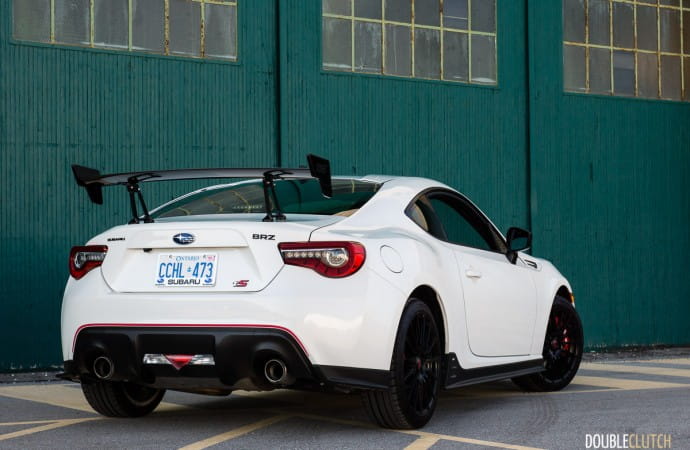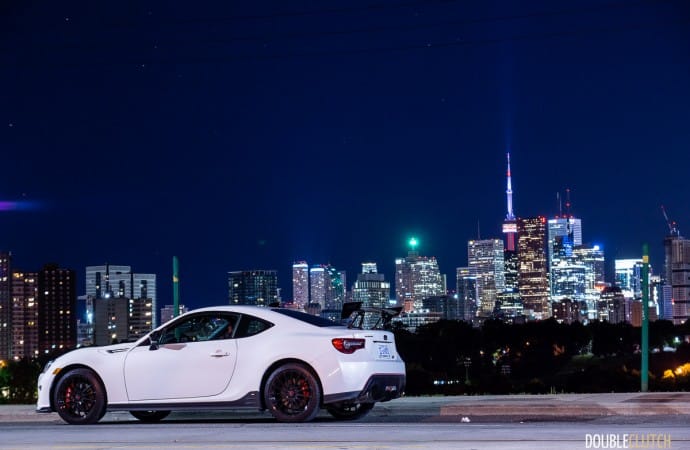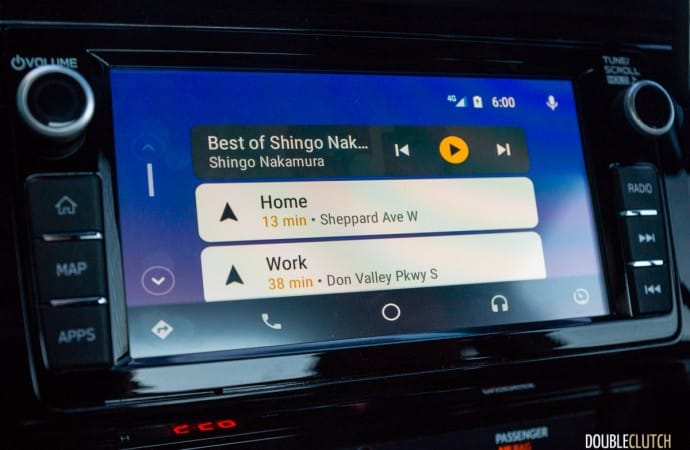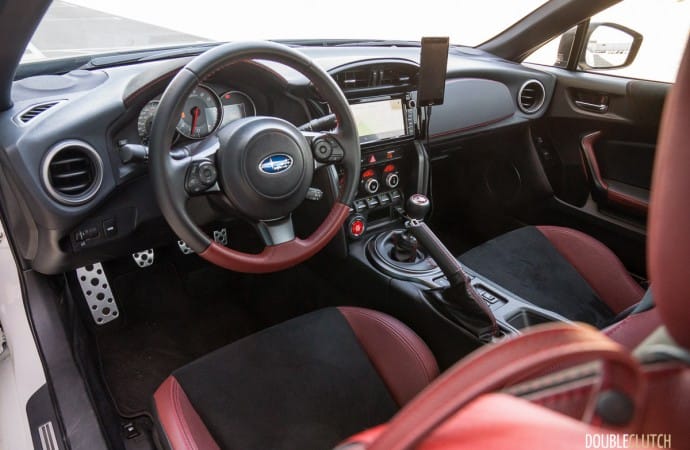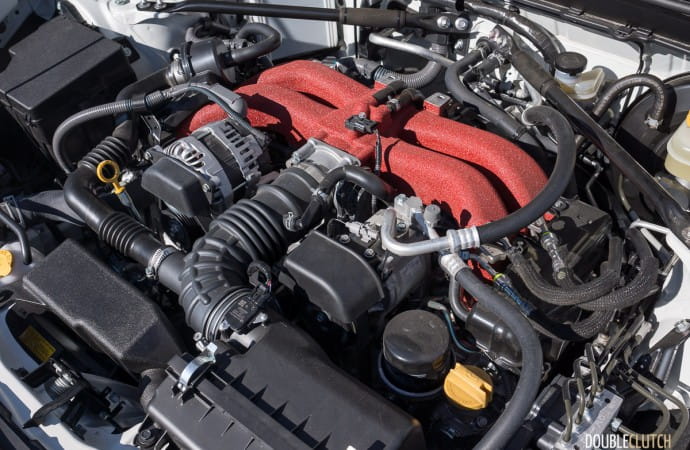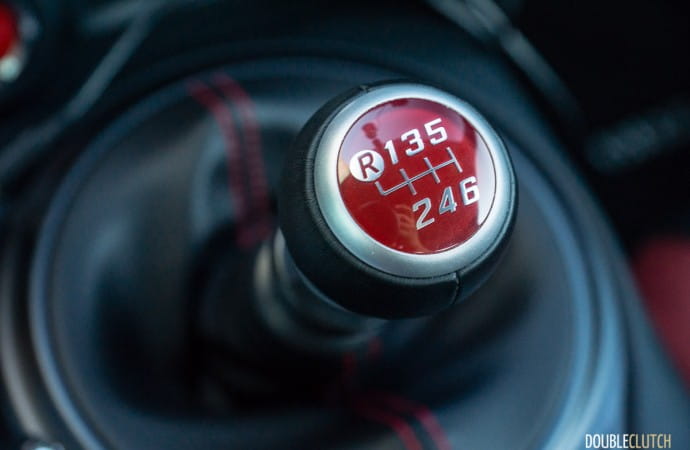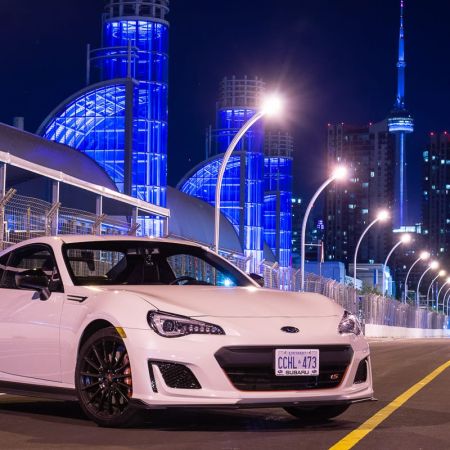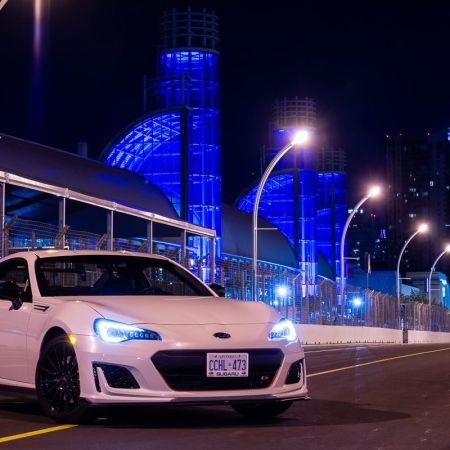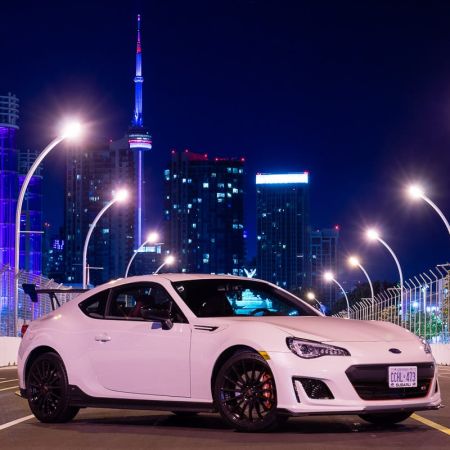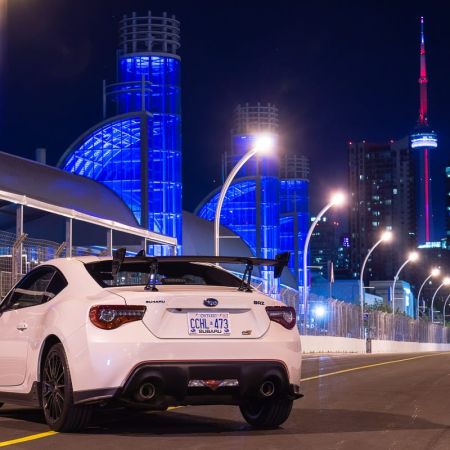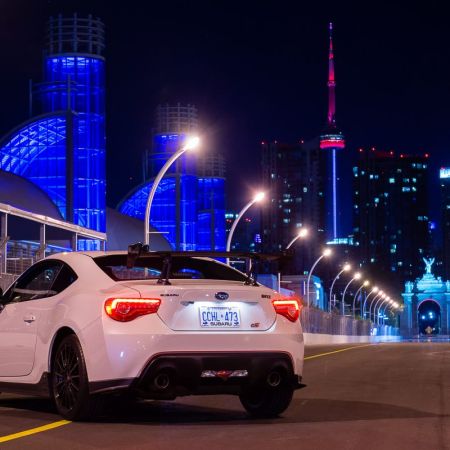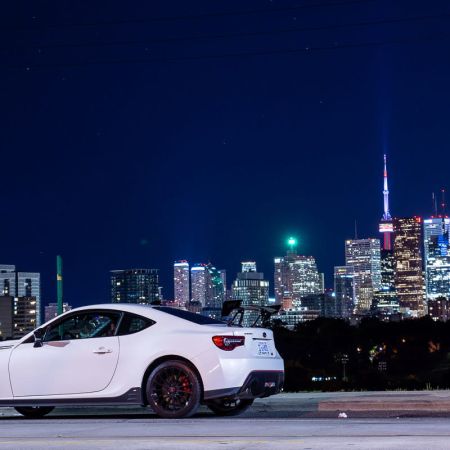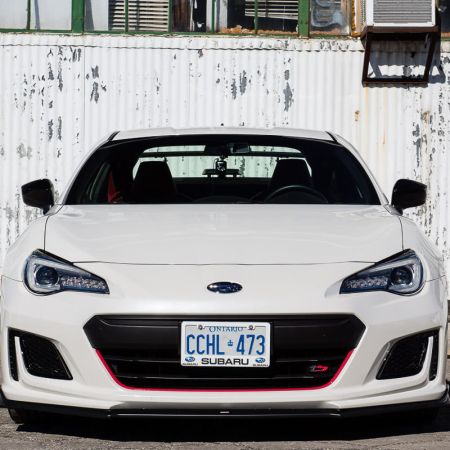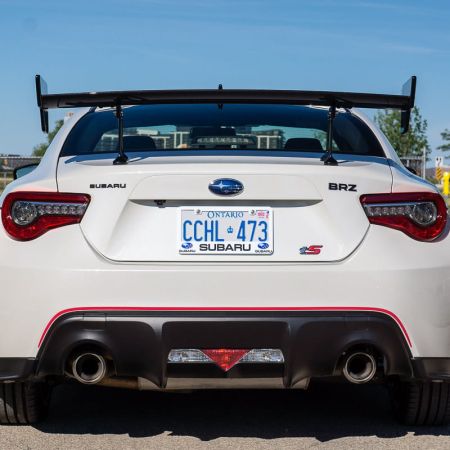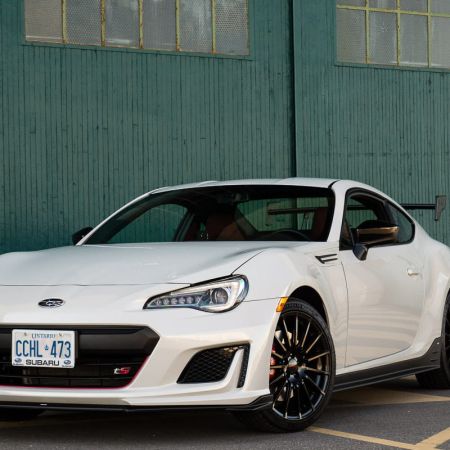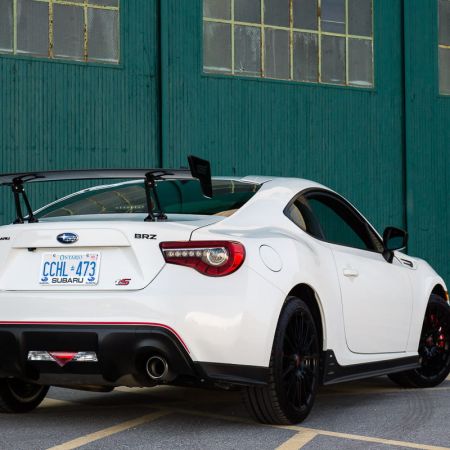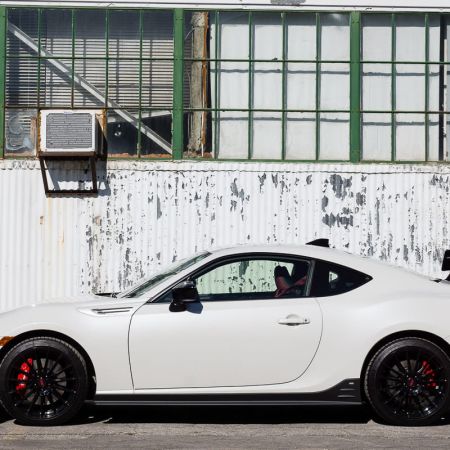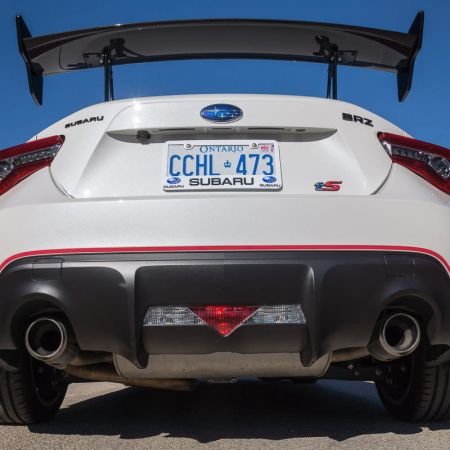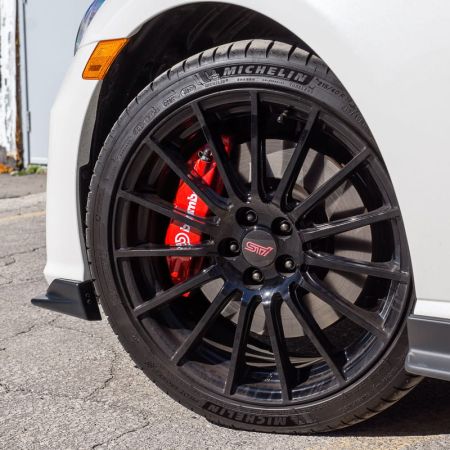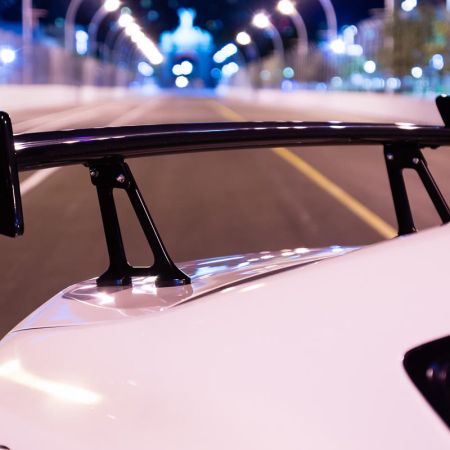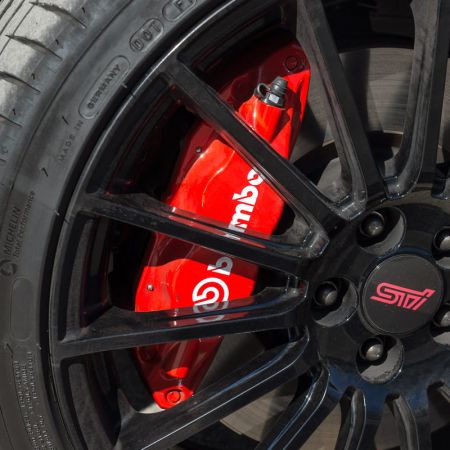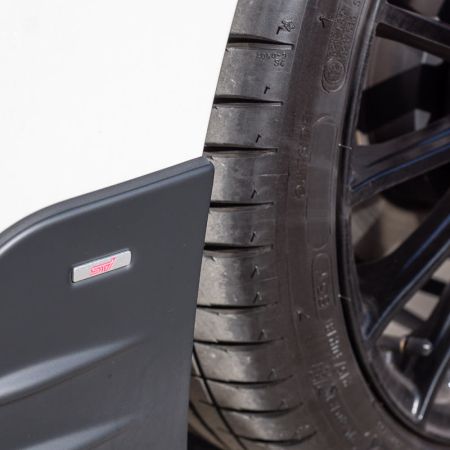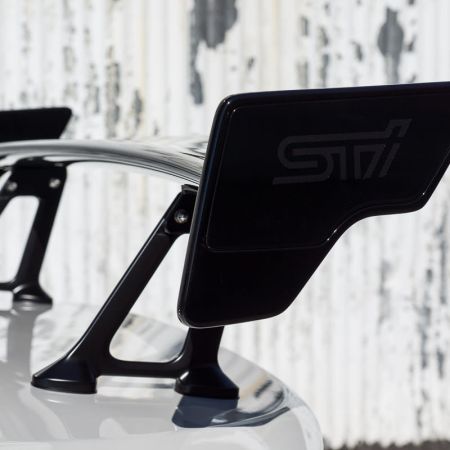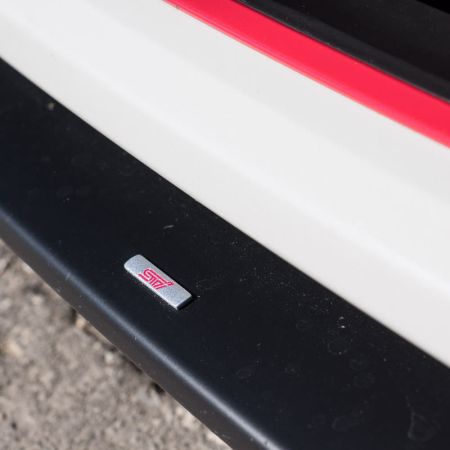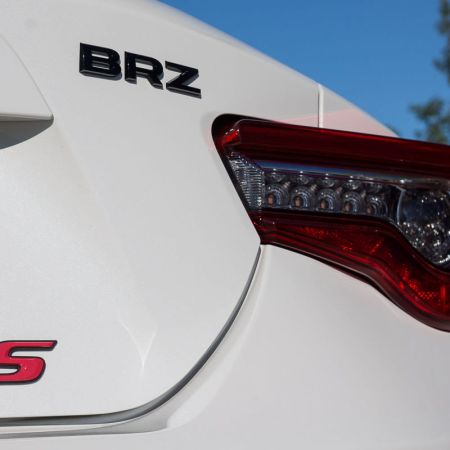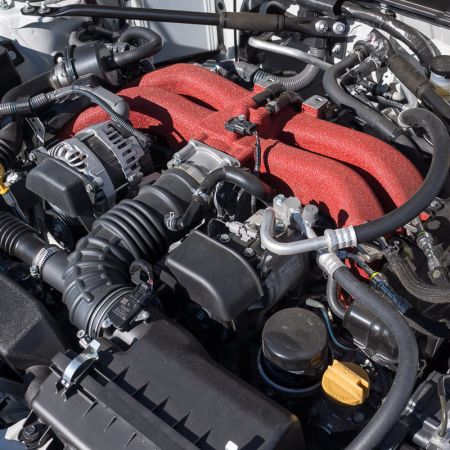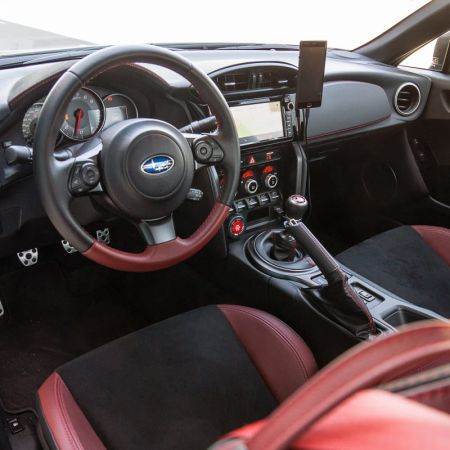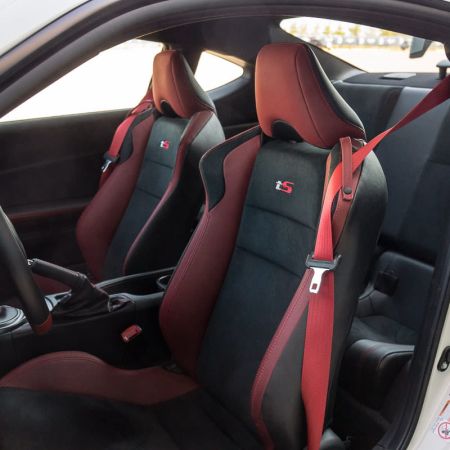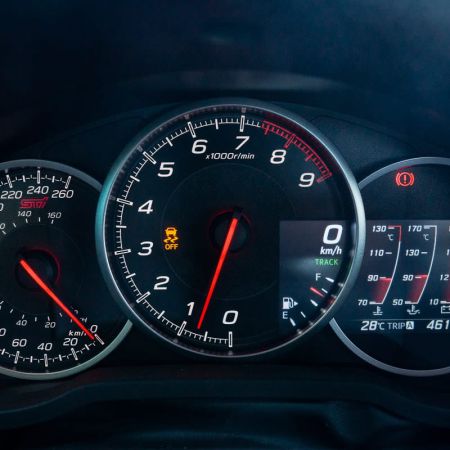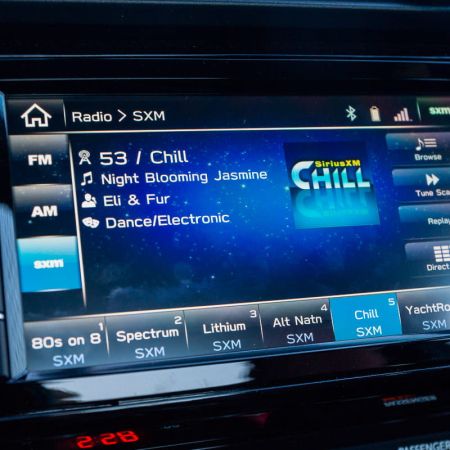In a world where crossovers rule, these little coupes stand out for their low curb weight, rear-wheel drive, and manual transmissions. Weight gain and feature creep are endemic, mostly because it’s what people actually want. Luxuries such as ventilated and massage seats are great when you’re looking to escape the necessities of commuting, but when you’re looking to derive enjoyment from driving, you need to pare it back down to basics.
Subaru’s BRZ was updated for the 2017 model year, but most are incremental: a smidge more horsepower, available Brembo brakes, and a nip-tuck here and there. For the 2018 model year, Subaru Canada has brought over this limited-edition 2018 Subaru BRZ tS, and we got the chance to sample one (out of 100, painted Crystal White Pearl) for a week-long test.
What does tS mean? It stands for “Tuned by STI”, and before you start jumping up and down, there’s no additional power added. I had many people, throughout the course of the week, ask me if Subaru added any power to the engine, and the answer was always no. What do you get for the extra $5,700 over the BRZ Sport-tech RS? Aesthetically speaking, the most obvious item may be that trunk-mounted dry carbon wing. It is a nice quality piece, with two downforce positions you can manually adjust to and from. There are the usual STI-branded side and front lower skirts, but the BRZ tS simply isn’t an appearance package.
Underneath the skin, you get “STI-tuned” coil springs and dampers (supplied by Sachs), STI-branded bracing under the hood, underbody chassis bracing, STI-branded 18-inch (7.5J width) wheels with 215-section Michelin Pilot Sport 4 tires (not the Pilot Sport 4S), which alone are a big upgrade over the low-grip Michelin Primacy MXM4 tires that the standard BRZ comes equipped with. Inside, you get a good amount of suede surfaces, and a lot of cherry red accents, including red seatbelts and tS badges on the seats. The red shift knob appears to be borrowed straight from the WRX STI (reviewed here), and the red STI-branded engine start-stop button is a nice touch, as well.
If you haven’t caught on yet, there are a lot of STI badges peppered all over the car, inside and out. As nice as the all the “go fast” accents are in the BRZ tS, one of the big updates for me is the updated infotainment unit, which finally brings Apple CarPlay and Android Auto integration to the BRZ. It makes navigating (with Google Maps) so much easier, and Google Play Music should be a familiar interface now. The updated infotainment is what impressed most, among some of my friends who have their own BRZs.
The engine is carried over from 2017: a 2.0L horizontally-opposed four-cylinder engine, featuring Toyota’s D4S direct and port fuel injection systems. Power is unchanged at 205 horsepower at 7,000RPM and 156 lb-ft. of torque at 6,400-6,800RPM. A six-speed manual is the only transmission available in the BRZ tS, and power is sent to the rear axle through a Torsen limited-slip differential (4.30 final drive ratio, like the 2017 BRZ). The shifter in particular is a gem, with a positive and slightly notchy operation. It is almost as good as the shifter linkage in the new Mazda MX-5 (reviewed here), and a genuine joy to use. Thanks to that short final drive, you’ll be working that shifter a lot.
Once you sink into that heavily-bolstered driver’s seat, you’ll find the driving position very low – about as low as the current Mazda MX-5. You don’t sit on the seat, you sit in it with your shins almost horizontal, depending on how tall you are. I was able to quickly find a comfortable seating position, but even sitting fairly upright, the rear seats continue to be pretty useless for anybody with legs. Anybody who’s already familiar with the Scion FR-S, Toyota 86, and previous variants of the Subaru BRZ won’t feel much of a difference, other than some extra knee padding (absent on early models) and the suede touch points. You still sit lower than the window sills of some larger crossovers, which can either be slightly unsettling, or humourous.
One hotly debated “quirk” with these cars is the “torque dip” that occurs around 4000RPM. You may not notice it in typical street driving, but when you’re trying to extract maximum acceleration from the engine, you definitely feel the drop in power. In a world of turbocharged torque, the instant response from the BRZ is welcome, but the lack of a truly linear power delivery is something to keep in mind. It is a little disappointing that Subaru wasn’t able to eliminate the torque dip when they updated the FA20 engine for the 2017 model year.
To add insult to injury, the digital “dyno graph” in the instrument cluster actually highlights where the torque dip occurs. The other item that everybody talks about is the “lack” of horsepower. People have gotten used to increased horsepower and torque for the same reasons, and those who like to focus on numbers may be eager to point out the deficit, but the experience provided by Subaru’s BRZ is hard to explain with specifications alone.
One of the best parts of the Subaru BRZ is how it handles. The steering is electrically assisted, but I feel it is one of the best electric power steering systems out there for the money. It is incredibly precise, and actually talks to you – I surmise one reason why the steering is so good is because there aren’t any drive axles going to the front wheels. You don’t need me to tell you that the Subaru BRZ is an extremely nimble car, but the upgrades the tS package brings makes everything that little bit sweeter.
The biggest item has to be the tires, for better or for worse. The Michelin Pilot 4 tires provide much more lateral grip, which is good for chasing lap times, but you do trade away some of the friendly handling limits to get it. The STI-branded springs and dampers do firm up the ride somewhat, but I wouldn’t call it punishing. Subaru’s own WRX STI has a much more brittle ride, all things considered. The subframe “draw stiffeners” don’t contribute directly to the firmer spring rates, but they help keep the rear subframe better planted for better lateral and longitudinal traction. Overall, it does feel like the Subaru BRZ tS exhibits slightly better roll stiffness and slightly flatter cornering at the limit.
Sports cars are getting more and more efficient these days, often thanks to new technologies such as turbocharging. The Subaru BRZ goes about obtaining its efficiency ratings the old-fashioned way: lightweight. Subaru Canada rates the BRZ tS at 11.6L/100km in the city, 8.6L/100km on the highway, and 10.2L/100km in a combined cycle. During my week of very mixed driving, I ended up exceeding my expectations with an indicated average of 8.5L/100km. The fuel tank will hold 50L of the recommended premium fuel. The real-world efficiency numbers surprised me – even with the more aggressive final drive ratio making for a slightly buzzy highway drive with the flow of traffic.
Subaru Canada prices the BRZ tS at $37,395 as-tested, before taxes and additional fees. This represents a premium of almost $10,000 over the base BRZ, and a $5,700 jump over the BRZ Sport-tech RS. Right away, you need to ask yourself whether the aero bits are worth the money. The stiffer springs and dampers do provide a tangible handling improvement, but to me, the $31,695 BRZ Sport-tech RS is the best value. You still get the Brembo brakes and Sachs dampers that tighten up response with the standard springs, but you don’t get the showy cherry red tS bits, which I don’t personally need. The wing gets a lot of attention, and is nice to look at, but I don’t feel the BRZ benefits from it. You’d have to be going quite fast in order to notice the added downforce, and the BRZ isn’t much of a high-speed car to begin with – at least out of the box.
Critics and detractors will say the BRZ tS isn’t worth the money, considering all the community and aftermarket support that exists for these cars. I’d be inclined to agree with them, but the BRZ tS remains attractive to the type of customer who doesn’t want to necessarily do all the research that goes into modifying these cars. Retaining the factory warranty alone is worth considering, and the fact that there’s only 100 of the BRZ tS means that you’re looking at a fairly rare car. One good way to be different from the large horde that is the BRZ community is to pick up a limited-edition model, and the BRZ tS is a good way to do it.
See Also:
2018 Toyota 86 Special Edition
2017 Subaru BRZ Inazuma Edition

